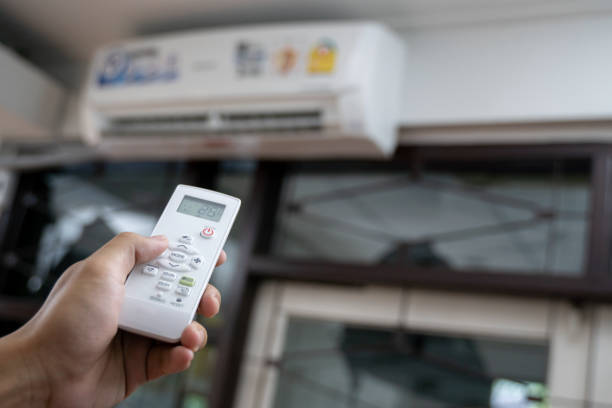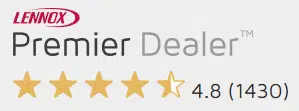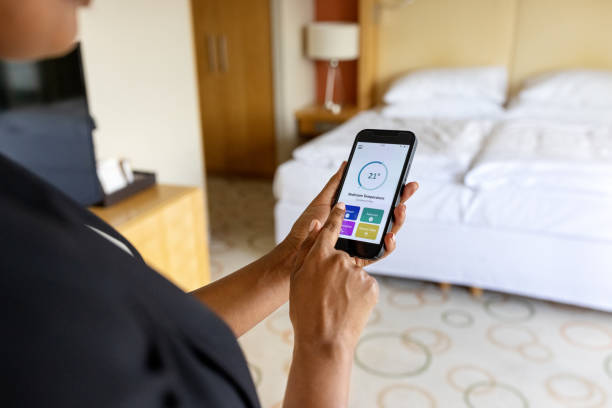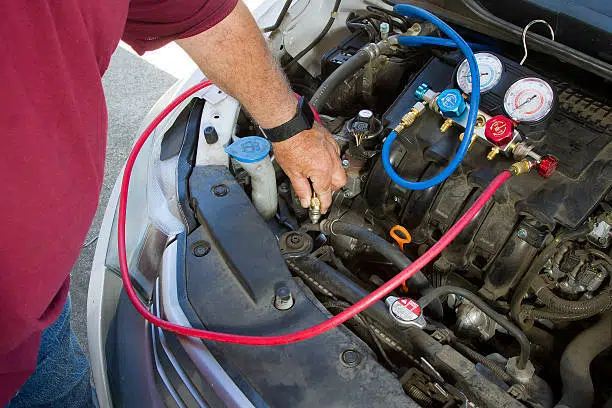
Table of Contents
As the summer sun beats down, the importance of a reliable air conditioning system becomes paramount, ensuring comfort and productivity in both residential and commercial spaces. Among the array of options available, the 4-ton AC unit emerges as a stalwart choice, offering substantial cooling capacity and efficiency. However, comprehending the installation costs is pivotal before committing to such an investment. In this comprehensive guide, we’ll navigate through the intricacies of installing a 4-ton AC unit, shedding light on the associated expenses and offering insights for a cost-effective installation.
What is a 4-Ton AC Unit?
Within the realm of air conditioning, the term “ton” serves as a metric for cooling capacity. A 4-ton AC unit is adept at cooling spaces ranging from approximately 1,800 to 2,400 square feet, making it well-suited for sizable homes or commercial establishments. With its robust cooling prowess, a 4-ton air conditioner in Canada ensures consistent indoor comfort even amidst sweltering temperatures.
Factors Affecting 4-Ton AC Unit Installation Cost
The overall cost of installing a 4-ton AC unit is influenced by various factors:
Size and Layout of the Structure: The size and layout of the building significantly impact installation complexity. Larger spaces may necessitate additional ductwork or zoning systems for uniform air distribution, potentially elevating installation expenses.
Existing Infrastructure: The condition of pre-existing ductwork, electrical systems, and HVAC infrastructure can influence installation costs. Upgrades or repairs might be required to accommodate the new AC unit, thereby adding to the overall expenditure.
Energy Efficiency Ratings and Features: Opting for energy-efficient models typically incurs a higher upfront cost but promises long-term savings on energy bills. Features like variable-speed motors, programmable thermostats, and zoning systems contribute to enhanced efficiency but may entail additional installation expenses.
Brand and Model Selection: The choice of brand and model significantly impacts installation costs. Premium brands or models boasting advanced features often command a higher price tag, whereas budget-friendly options offer more affordability.
Local Labor and Material Costs: Labor and material expenses vary based on geographical location and market demand. Higher labor rates or the necessity for specialized equipment can inflate installation costs, particularly in urban areas.
Additional Accessories or Upgrades: Optional accessories such as smart thermostats, air purifiers, or UV lights enhance comfort and indoor air quality but contribute to the overall installation cost.
Contact HVAC Service Solutions to ascertain the cost of installing a 4-ton AC unit tailored to your specific requirements.
Detailed Breakdown of Average 4-Ton AC Unit Cost of Installation
When contemplating the installation of a 4-ton air conditioning unit, understanding the cost breakdown is paramount. Here’s a detailed overview:
4-Ton AC Unit Cost Itself
The initial investment in the AC unit constitutes a substantial portion of the total cost. A 4-ton AC unit cost typically ranges from $4,000 to $5,500. However, the final cost hinges on factors such as brand, model, and features selected. High-end models boasting advanced technology and energy-efficient features lean towards the higher end of the price spectrum.
Installation Labor Costs
Professional installation is imperative for ensuring optimal system performance and longevity. Installation labor costs typically range from $2,000 to $4,000. This encompasses the expertise and labor of adept HVAC technicians for proper unit installation, alongside any requisite permits or inspections mandated by local authorities. Installation intricacies, such as ductwork modifications or electrical upgrades, influence labor expenses.
Additional Materials and Equipment
Apart from the AC unit, various additional materials and equipment may be necessary during installation. These encompass ductwork, refrigerant lines, insulation, and other components essential for seamless installation and operation. Additional material costs typically add approximately $1,500 to $3,000 to the total installation expenditure, contingent upon factors like building layout and existing infrastructure.
Permits and Inspections
Securing requisite permits and undergoing inspections are pivotal pre-installation steps to ensure compliance with local building codes and regulations. Permit fees and inspection costs vary by location, typically ranging from $200 to $800. These costs are indispensable for guaranteeing the safety and legality of the installation process and should be factored into the overall budget.
For further insights into 4-ton AC unit cost, refer to the comprehensive guide via the link below.
https://thehvacservice.ca/central-air-conditioner-installation-expenses/
By comprehending the average installation costs for a 4-ton AC unit, homeowners and businesses can adeptly prepare for the financial outlay associated with enhancing their HVAC systems.
Tips for Cost-Effective Installation
When orchestrating the installation of a 4-ton air conditioning unit, implementing strategic measures is imperative to optimize the investment and curtail costs. Here are detailed tips to facilitate cost-effective installation:
Solicit Multiple Quotes
When soliciting estimates, engage with several reputable HVAC contractors in your vicinity. Compare not solely the prices but also the array of services rendered and the reputation of each contractor. Prioritize companies boasting a track record of successful installations and favorable customer testimonials.
Embrace Energy Efficiency
Prioritizing energy-efficient 4-ton package units can yield substantial long-term savings on energy bills. Seek out models sporting high SEER ratings, indicative of superior energy efficiency. Additionally, explore available rebates, incentives, or tax credits for energy-efficient HVAC systems in your locale to offset initial costs.
Strategically Time Installation
Strategically scheduling installation during off-peak seasons can translate to cost savings and expedited service. Consider scheduling installation during periods when HVAC contractors experience reduced demand, potentially garnering discounts or promotional offers. By planning proactively, you can secure a convenient installation date and potentially negotiate favorable prices.
Explore Financing Alternatives
If upfront expenditure poses a concern, delve into financing alternatives proffered by HVAC contractors or manufacturers. Numerous companies extend flexible financing plans boasting competitive interest rates and manageable repayment terms. Thoroughly review the terms and conditions of each financing option to select the one that aligns with your budgetary constraints and financial objectives.
By adhering to these cost-effective installation strategies, homeowners and businesses can make well-informed decisions, maximizing the value of their investment in a 4-ton package unit.
How Much Can I Save Up with AC Government Rebates?

Air conditioning rebates serve as financial incentives extended by governments, utility companies, or other entities to promote the acquisition and installation of energy-efficient air conditioning systems. These rebates are designed to bolster HVAC system efficacy, curtail energy consumption, and mitigate environmental impact.
The process of securing government air conditioning rebates typically entails scheduling an energy assessment, executing upgrades, and undergoing a post-retrofit assessment to qualify for incentives.
In Canada, a prominent rebate initiative is the Home Efficiency Rebate Plus (HER+), affording individuals or businesses the opportunity to garner up to $10,000 for assorted home improvements, including HVAC system efficiency enhancements. Under HER+, rebates for air conditioning units can amount to a maximum of $7,800.
Refer to our previous article for exhaustive insights into capitalizing on AC government rebates in Ontario.
https://thehvacservice.ca/buy-and-save-budget-with-government-air-conditioning-rebate-in-2023/
Conclusion
In essence, comprehending the costs entailed in installing a 4-ton air conditioning unit is instrumental in making well-informed decisions concerning HVAC investments. With the average cost breakdown ranging from $4,000 to $5,500 for the unit itself, $2,000 to $4,000 for installation labor, and an additional $1,500 to $3,000 for materials and equipment, individuals and businesses can adeptly budget for their AC upgrade.
For expert installation services and personalized quotations, reach out to HVAC Service Solutions today. Our team of adept technicians is steadfast in delivering tailored solutions aligned with your requirements.
Frequent Asked Questions
What is the typical square footage a 4-ton AC unit can cool?
A 4-ton AC unit is capable of effectively cooling spaces ranging from approximately 1,800 to 2,400 square feet. However, this estimation can vary based on several factors including the climate of the region, insulation quality of the building, ceiling height, and the presence of heat-generating appliances. It’s essential to consult with HVAC professionals to determine the most suitable unit size for your specific space to ensure optimal cooling performance and energy efficiency.
How much does a 4-ton AC unit cost?
The cost of a 4-ton AC unit typically ranges between $4,000 to $5,500. However, this price can vary depending on factors such as the brand, model, energy efficiency rating (SEER), and additional features like advanced filtration systems or smart thermostats. It’s advisable to obtain quotes from multiple HVAC suppliers or contractors to compare prices and find the best value for your budget and needs.
What factors influence the installation cost of a 4-ton AC unit?
Several factors contribute to the installation cost of a 4-ton AC unit, including the complexity of the installation process, existing infrastructure modifications, labor and material expenses, permit fees, and any additional accessories or upgrades desired. Factors such as the size and layout of the building, geographical location, and local building codes and regulations can also impact installation costs. Consulting with HVAC professionals can provide a comprehensive assessment of the specific factors affecting installation expenses for your project.
What are some energy-efficient features to look for in a 4-ton AC unit?
Energy-efficient features to prioritize in a 4-ton AC unit include a high Seasonal Energy Efficiency Ratio (SEER) rating, variable-speed motors, programmable thermostats, and zoning systems. These features contribute to reducing energy consumption and utility costs while ensuring consistent comfort levels throughout the space. Investing in an energy-efficient unit may result in long-term savings on energy bills and contribute to environmental sustainability.
How important is professional installation for a 4-ton AC unit?
Professional installation is paramount for ensuring the optimal performance, efficiency, and longevity of a 4-ton AC unit. HVAC technicians have the expertise and experience to properly size and install the unit, ensuring it operates at peak efficiency while adhering to manufacturer specifications and local building codes. Professional installation also minimizes the risk of common issues such as improper airflow, refrigerant leaks, and electrical malfunctions, which can compromise system performance and durability.
What permits and inspections are required for installing a 4-ton AC unit?
The permits and inspections required for installing a 4-ton AC unit vary depending on local building codes and regulations. Typically, homeowners or contractors are required to obtain a permit from the local building department before commencing installation. After installation, the system may need to undergo inspections by local authorities to ensure compliance with safety and environmental standards. Permit fees and inspection costs vary by jurisdiction and are typically included in the overall installation expenses. It’s essential to consult with local authorities or HVAC professionals to determine the specific permit and inspection requirements for your area.
Are there any financing options available for purchasing and installing a 4-ton AC unit?
Yes, there are various financing options available to assist with the upfront costs of purchasing and installing a 4-ton AC unit. Many HVAC contractors and manufacturers offer financing plans with flexible terms and competitive interest rates, allowing homeowners to spread out the expense over time. Additionally, some utility companies or government programs may provide rebates or incentives for upgrading to energy-efficient HVAC systems, further offsetting the initial investment. It’s advisable to explore all available financing options and incentives to determine the most suitable solution for your budget and financial needs.
How can I maximize energy savings with a 4-ton AC unit?
To maximize energy savings with a 4-ton AC unit, there are several strategies you can implement. Firstly, choose a unit with a high SEER rating, as higher-rated units are more energy-efficient and can result in lower utility bills. Additionally, ensure proper installation and regular maintenance to optimize system performance and efficiency. Set your thermostat to the most energy-efficient temperature settings and utilize programmable or smart thermostats to adjust settings based on your schedule. Consider upgrading insulation, sealing ducts, and using ceiling fans to enhance cooling efficiency and reduce the workload on your AC unit.
What government rebates or incentives are available for installing a 4-ton AC unit?
Government rebates and incentives for installing a 4-ton AC unit vary by region and may include tax credits, cash rebates, or low-interest financing options. Programs like the Home Efficiency Rebate Plus (HER+) offer incentives for upgrading to energy-efficient HVAC systems, including 4-ton AC units, to promote energy conservation and reduce carbon emissions. It’s advisable to research available rebates and incentives through local government agencies or utility companies and consult with HVAC professionals to ensure eligibility and maximize savings on your AC installation.
When is the best time to schedule installation of a 4-ton AC unit?
The best time to schedule installation of a 4-ton AC unit is typically during the offseason or shoulder seasons when HVAC contractors have reduced demand. Scheduling installation during these times may result in faster service, lower installation costs, and more availability for scheduling appointments. Additionally, planning ahead allows ample time for obtaining permits, selecting the right unit, and coordinating with contractors, ensuring a smooth and efficient installation process. However, if immediate cooling is required due to system failure or extreme weather conditions, it’s essential to prioritize timely installation regardless of the season.
Share



















